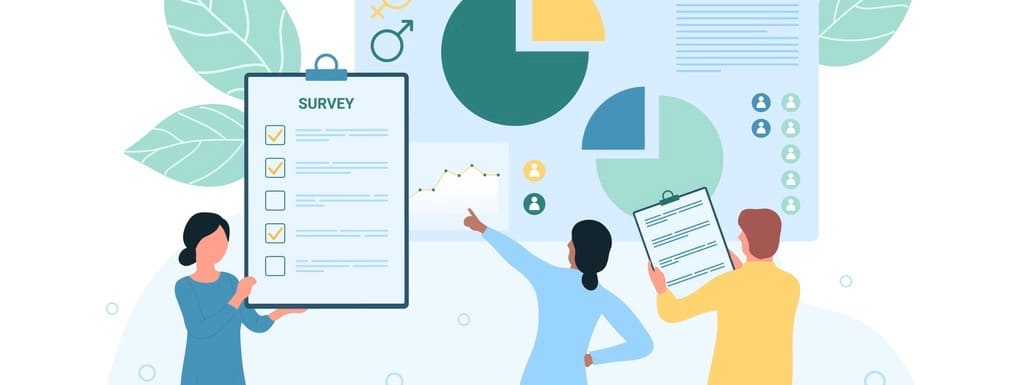The rules of the game are changing in public relations. A new king is ascending the throne: first-party data. With privacy laws tightening, the treasure trove of third-party data that PR professionals once relied upon is diminishing. This pivot demands a strategic response.
But the shift to using first-party data isn’t merely a regulatory reaction. It’s a gold mine for those who master its art. Embracing this shift positions you to deliver more personalized, impactful media relations campaigns. But how do you leverage this power effectively? Let’s unravel these next steps together, ensuring your PR tactics evolve as swiftly as the landscapes they inhabit.

Image Source: Unsplash
How is first-party data different from other types?
First-party data emerges directly from your audience. It’s the information they entrust to you, gathered through interactions with your brand—be it via website visits, social media engagement, or subscription forms. This contrasts sharply with third-party data, which is often aggregated by external organizations without a direct relationship to consumers.
Second-party data lands in between, where one party willingly shares its first-party insights with another. In essence, first-party data is like if you were to have a dialogue within a trusted circle, while other types are distant whispers from the marketplace at large, making it less accurate.
Why is first-party data important for PR?
The importance of first-party data truly can’t be understated in the modern internet era.
For PR pros, first-party data doesn’t just signal a change in trajectory—it’s the essence of tailored communication. It guides narratives that resonate on an individual level and drives strategic decision-making rooted in concrete insights. This tailored understanding of audiences allows you to craft campaigns with precision, enhancing message relevance and engagement.
Moreover, by owning the data narrative, you control privacy compliance, ensuring trust isn’t just a value proposition but a foundational practice. In short, first-party data equips PR professionals with the tools to forge deeper connections in an increasingly personalized media landscape.
And this is proven time and time again when we look at the major players in our industry. For example, the Wall Street Journal found that first-party data was key to repeat media buys, as advertisers were 37 percent more likely to renew if prior campaigns utilized that type of data. When campaigns are more targeted, you reach more of your audience, leading to higher conversions.
5 steps for switching from third-party data to first-party data
Navigating the transition from third-party to first-party data is like setting sail on a new voyage. Here are five steps to help PR teams chart the course and harness the winds of change.
Step 1: Establish clear data collection goals
Switching to first-party data demands a PR team to craft clear-cut goals that influence its media relations journey. The move starts with pinpointing exactly what you want this treasure of personal insights to reveal—engagement metrics, audience behavior, or response patterns.
It’s best to use the SMART goal framework for this task. SMART goals are Specific, Measurable, Achievable, Relevant, and Time-Bound and reflect your team’s overarching goals.
An example of a SMART goal your PR team should make could be:
“Within the next quarter, we’ll increase our email newsletter subscriptions by 20 percent through customized content strategies, leveraging insights from first-party data collected via website analytics and engagement tracking.”
When these goals reflect the SMART criteria, they help fine-tune the strategy, ensuring every piece of data serves a purpose. This deliberate focus ensures that your team’s efforts are not just collecting data but harvesting actionable intelligence that can elevate your brand’s narrative.
Step 2: Optimize direct channels for data capture
To successfully make the switch from third-party to first-party, you need to change how you collect the data your PR team needs. Maximizing the potential of direct channels turns every touchpoint into a data capture opportunity, turning interactions into valuable insights.
Here’s how you can capture that data from your audience:
- Website customization: Integrate interactive elements such as polls, quizzes, and downloadable content on your website that encourage users to share information.
- Email tailoring: Design email campaigns with segmentation in mind. Personalized calls-to-action can gather preferences that will refine future communications.
- Social media engagement: Utilize social media analytics to track engagement trends and introduce features that prompt user interaction, like contests or live Q&A sessions.
Each optimized channel not only serves as a conduit for first-party data but also strengthens customer relationships by providing them with a bespoke brand experience.
Step 3: Implement robust privacy policies
The switch to first-party data is not merely a strategic shift but a commitment to privacy that must be woven into the fabric of your operations. As you collect data:
- Clearly articulate how you’ll obtain, use, and protect user information.
- Protect collected data with stringent cybersecurity protocols to prevent breaches.
- Ensure opt-in mechanisms are in place so users actively choose to share their info.
- Ensure every digital touchpoint adheres to regulations like GDPR or CCPA.
- Regularly review and update policies to keep pace with evolving laws.
Creating a robust privacy framework solidifies trust between your brand and its audience. It doesn’t just satisfy legal requirements—it builds goodwill and enhances reputation in an ecosystem where consumer trust is paramount. In PR, you can’t afford to lose anyone’s trust.
Step 4: Incentivize audience participation
Encouraging your audience to hand over their first-party data is an art. You need to create offers they can’t ignore. Consider exclusive content. Behind-the-scenes access offers a unique allure that’s hard to resist. Discounts or special offers tailored to past behavior can reinforce loyalty, making customers feel valued and understood. You could also offer exclusive event invitations.
The critical factor here is relevance—the incentives must connect with your audience’s desires and align with the ethos of your brand. When done right, these rewards can transform casual browsers into brand ambassadors armed with insights you can use to refine your PR strategy.
Step 5: Utilize technology that aggregates first-party data
To effectively harness the power of first-party data, PR teams need to employ technology designed for the task. This means getting a full suite of the best-reviewed tools available.
Here’s what we recommend using to get the first-party data you need:
- Customer relationship management (CRM) systems: CRMs allow you to centralize interactions with your audience and capture details from numerous touchpoints.
- Marketing automation tools: These platforms can track user behavior across your digital properties, providing rich insights into preferences and engagement patterns.
- Analytics software: From website traffic to social media responses, analytics offer a deep dive into how your content performs and what drives user action.
- Feedback platforms: Collect direct input from your audience through surveys and feedback forms linked seamlessly to your other systems.
Integrating these technologies streamlines data collection and ensures that you’re equipped to make data-driven decisions that resonate with your audience on a more personal level.
In conclusion…
The digital terrain is shifting beneath our feet, and with it, the need for PR professionals to pivot toward first-party data strategies has never been more vital. Seize this moment to redefine how you gather and leverage audience insights. Let the guidelines outlined here be your compass.
Embrace the transformation with a strong and precious focus and discover just how impactful your tailored campaigns can be. Remember that every piece of data is a stepping stone toward more personal and powerful public engagement—start building on that foundation today for a tomorrow where your brand’s resonance grows stronger with each one-to-one interaction.



